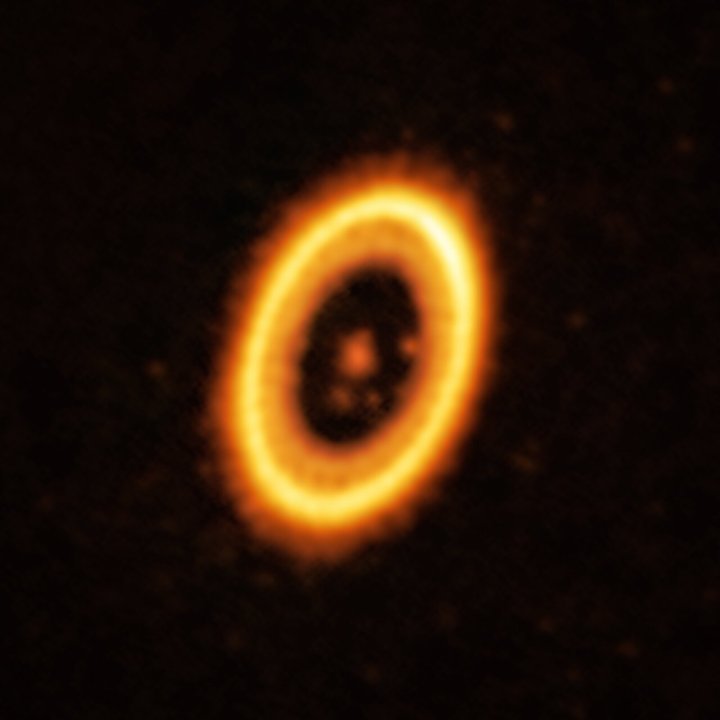Astronomers goal first proof of two planets sharing the the same orbit

The overwhelming majority of exoplanets which were found are within star systems broadly identical to our solar system: one (or frequently two or more) stars on the heart, with planets orbiting at a form of distances. But fresh learn has turned up one thing very weird: what may well well be two exoplanets sharing the the same orbit, which, whether it is confirmed, may well well be the main discovery of its kind.
Astronomers former a ground-primarily based array called the Atacama Tall Millimeter/submillimeter Array (ALMA) to investigate the system around star PDS 70, located 400 light-years away, with two identified exoplanets orbiting it called PDS 70 b and c. But observations of PDS 70 b identified a cloud of debris in its orbit which may well well carry out correct into a sibling planet sharing the the same orbit.

“Two a long time ago it used to be predicted in theory that pairs of planets of identical mass may well well portion the the same orbit around their star, the so-called Trojan or co-orbital planets. For the main time, now we agree with found proof in settle on of that plan,” acknowledged lead author Olga Balsalobre-Ruza of the Centre for Astrobiology in Madrid in a assertion.
There are a range of examples of shrimp our bodies sharing the orbit of a planet in our solar system, reminiscent of the Jupiter Trojan asteroids. There are even asteroids that portion Earth’s orbit. But astronomers agree with never viewed Trojans outdoor our solar system, and agree with never viewed a Trojan planet although they’ve been theorized to exist.
“Exotrojans [Trojan planets outside the Solar System] settle on up to now been adore unicorns: they are allowed to exist by theory but no person has ever detected them,” acknowledged co-author Jorge Lillo-Field, also of the Centre for Astrobiology.
The relevance of the cloud of debris found within the PDS 70 system is that it has main mass — the researchers estimate that the cloud has around twice the mass of our moon — so it may well perhaps most likely well be within the skill of forming correct into a second planet. Or there may well well even be a planet already there within the mud.
“Who may well well imagine two worlds that portion the length of the one year and the habitability stipulations? Our work is the main proof that this carry out of world may well well exist,” says Balsalobre-Ruza. “We are in a position to imagine that a planet can portion its orbit with hundreds of asteroids as within the case of Jupiter, but it absolutely is tips-blowing to me that planets may well well portion the the same orbit.”
To be taught more, the researchers thought to expend ALMA any other time in 2026 to interrogate on the system and take a look at out how the planet and the cloud agree with moved in their orbit.
The learn is printed within the journal Astronomy & Astrophysics.
Editors’ Solutions
-
Pollution-tracking NASA satellite tv for pc shares its first images of air quality
-
Astronomers goal the shiniest exoplanet ever found
-
Tatooine-adore exoplanet orbits two stars in uncommon grand discovery
-
Astronomers factual spotted the finest cosmic explosion ever viewed
-
Astronomers portion early images from James Webb’s galaxy interrogate

Georgina is the Digital Traits quandary author, covering human quandary exploration, planetary science, and cosmology. She…
Newbie astronomer spots dwarf galaxy that computer systems overlooked

As machine studying approaches assemble more and more refined, they are increasingly former in astronomy for stylish projects adore recognizing shaded and much away galaxy clusters. It may well perhaps well be vastly valuable to agree with computer systems search via grand knowledge to interrogate for explicit objects as they may be able to process a wide amount of files — nonetheless, there are some judgments that silent require the human contact.
This week’s picture from the Hubble Location Telescope displays an object that used to be spotted by a human even after it had been overlooked by a computer algorithm. The dwarf galaxy Donatiello II is terribly faint and exhausting to come to a decision on from the background within the again of it, but an amateur astronomer used to be in a quandary to point it out.
Read more
Elon Musk says SpaceX eying March for first orbital take a look at of Starship rocket

SpaceX chief Elon Musk says the corporate’s subsequent-generation Tall Heavy rocket and Starship spacecraft is on course for a March starting up.
“If final assessments flow successfully, we can try a Starship starting up subsequent month,” Musk acknowledged in a tweet just a few days ago, following up a brief time later with: “Success is powerful from streak, but excitement is assured.”
Read more
The actual approach to see two astronauts receive their first spacewalk on Friday

This Friday, January 20, will take a look at out two astronauts from the Global Location Insist (ISS) head out of the quandary’s Quest airlock to set up novel hardware to the quandary’s exterior.
NASA Stay: First price Circulation of NASA TV
Read more